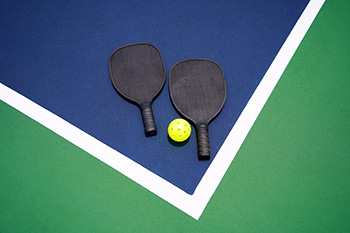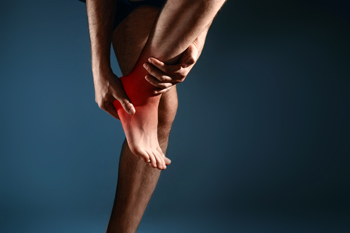Items filtered by date: March 2023
Risk Factors for Developing Heel Spurs

Sharp pain in the heels is often mistaken for plantar fasciitis, the most common complaint of heel pain. However, in some cases, the pain may be caused by a heel spur which is a buildup of calcium that forms a protrusion on the heel bone. A heel spur may take months to form and is often the result of too much pressure on muscles and ligaments. Runners and athletes who do a great deal of jumping may be at higher risk for heel spurs. Ironically, a heel spur may also be caused by plantar fasciitis, which makes it even more difficult to diagnose. An X-ray will show whether you have a heel spur. Treatment for a heel spur includes anti-inflammatory medication, cortisone injections, and custom orthotics. If your heel pain continues or worsens, it is suggested that you consult a podiatrist who can confirm the diagnosis and offer appropriate treatment solutions.
Heel spurs can be incredibly painful and sometimes may make you unable to participate in physical activities. To get medical care for your heel spurs, contact Gregory Rorick, DPM from Rorick Podiatry, PC. Our doctor will do everything possible to treat your condition.
Heels Spurs
Heel spurs are formed by calcium deposits on the back of the foot where the heel is. This can also be caused by small fragments of bone breaking off one section of the foot, attaching onto the back of the foot. Heel spurs can also be bone growth on the back of the foot and may grow in the direction of the arch of the foot.
Older individuals usually suffer from heel spurs and pain sometimes intensifies with age. One of the main condition's spurs are related to is plantar fasciitis.
Pain
The pain associated with spurs is often because of weight placed on the feet. When someone is walking, their entire weight is concentrated on the feet. Bone spurs then have the tendency to affect other bones and tissues around the foot. As the pain continues, the feet will become tender and sensitive over time.
Treatments
There are many ways to treat heel spurs. If one is suffering from heel spurs in conjunction with pain, there are several methods for healing. Medication, surgery, and herbal care are some options.
If you have any questions feel free to contact our office located in New York Mills, Utica, NY . We offer the latest in diagnostic and treatment technology to meet your needs.
Severely Cracked Heels Are Known as Fissures

Severely cracked heels are called fissures. Dry skin causes cracked heels, and fissures can bleed and become infected. There are many reasons to have dry skin on the heels. These can include wearing shoes that are backless, or from medical conditions such as a thyroid disorder or diabetes. The skin on the heels can crack as the aging process occurs, or from damaged nerves that are unable to sweat. Fissures can be painful, and medical treatment is often sought that may help to stop any infection. Many people enjoy soaking their feet in warm water for several minutes, followed by applying a good moisturizer on them. This process can be completed by wearing clean cotton socks, which can protect the heel. If you have heel fissures, it is suggested that you consult with a podiatrist who can prescribe medicated cream that can effectively treat cracked heels and fissures.
Cracked heels are unsightly and can cause further damage to your shoes and feet. If you have any concerns, contact Gregory Rorick, DPM from Rorick Podiatry, PC. Our doctor can provide the care you need to keep you pain-free and on your feet.
Cracked Heels
Cracked heels appear unappealing and can make it harder for you walk around in sandals. Aside from looking unpleasant, cracked heels can also tear stockings, socks, and wear out your shoes. There are several methods to help restore a cracked heel and prevent further damage.
How Do You Get Them?
Dry skin is the number one culprit in creating cracked heels. Many athletes, walkers, joggers, and even swimmers suffer from cracked heels. Age and skin oil production play a role to getting cracked heels as well.
Promote Healing
Over the counter medicines can help, especially for those that need instant relief or who suffer from chronic dry feet.
Wear Socks – Wearing socks with medicated creams helps lock in moisture.
Moisturizers – Applying both day and night will help alleviate dryness which causes cracking.
Pumice Stones – These exfoliate and remove dead skin, which allows for smoother moisturizer application and better absorption into the skin.
Change in Diet
Eating healthy with a well-balanced diet will give the skin a fresh and radiant look. Your body responds to the kinds of food you ingest. Omega-3 fatty acids and zinc supplements can also revitalize skin tissue.
Most importantly, seek professional help if unsure how to proceed in treating cracked heels. A podiatrist will help you with any questions or information needed.
If you have any questions, please feel free to contact our office located in New York Mills, Utica, NY . We offer the newest diagnostic and treatment technologies for all your foot care needs.
Pickleball and Foot Injuries

Pickleball is a popular sport, and it is a combination of tennis and badminton. Research has shown the average age for players is approximately 40 years old and a large percentage of players are over the age of 55. This sport involves the feet moving suddenly in all directions, which may put stress on the ligaments and tendons surrounding the ankle joint. Many people endure ankle injuries, but the range of motion may be maintained when an ankle brace is worn. Achilles tendonitis is another injury that pickleball players may be prone to. This can happen as a result of repetitive stress to the Achilles tendon. It is in the back of the lower leg, and it connects the heel to the calf muscles. Heel pain may accompany this type of injury. Additionally, the heel may become bruised from playing on hard surfaces, which may lead to plantar fasciitis. This is a tearing or inflammation of the plantar fascia, which is found on the sole of the foot and connects the heel to the toes. If you are interested in playing pickleball, it is suggested that you speak with a podiatrist who can inform you of effective methods to help prevent foot injuries.
Foot Pain
Foot pain can be extremely painful and debilitating. If you have a foot pain, consult with Gregory Rorick, DPM from Rorick Podiatry, PC. Our doctor will assess your condition and provide you with quality foot and ankle treatment.
Causes
Foot pain is a very broad condition that could be caused by one or more ailments. The most common include:
- Bunions
- Hammertoes
- Plantar Fasciitis
- Bone Spurs
- Corns
- Tarsal Tunnel Syndrome
- Ingrown Toenails
- Arthritis (such as Gout, Rheumatoid, and Osteoarthritis)
- Flat Feet
- Injury (from stress fractures, broken toe, foot, ankle, Achilles tendon ruptures, and sprains)
- And more
Diagnosis
To figure out the cause of foot pain, podiatrists utilize several different methods. This can range from simple visual inspections and sensation tests to X-rays and MRI scans. Prior medical history, family medical history, and any recent physical traumatic events will all be taken into consideration for a proper diagnosis.
Treatment
Treatment depends upon the cause of the foot pain. Whether it is resting, staying off the foot, or having surgery; podiatrists have a number of treatment options available for foot pain.
If you have any questions, please feel free to contact our office located in New York Mills, Utica, NY . We offer the newest diagnostic and treatment technologies for all your foot care needs.
Heel Pain Caused by Overuse

Among the numerous causes of heel pain, plantar fasciitis is at the top of the list. This common complaint is the result of overuse that inflames the band of tissue that runs beneath the foot. Wearing shoes that offer ample support and proper cushioning is a good way of preventing plantar fasciitis. Adding low-impact sports, such as swimming, is also recommended to give the plantar fascia a rest between high-impact activities. Another type of heel pain caused by overuse is Achilles tendonitis. This occurs when the Achilles tendon, which connects the calf muscles to the heel, becomes inflamed. In the most severe cases, the tendon can be ruptured, for which immediate medical attention is required. Noninsertional Achilles tendonitis involves small tears in the fibers of the middle part of the tendon. Insertional Achilles tendonitis affects the lower part of the tendon, where it attaches to the heel bone. Stretching the calf muscles and warming up before embarking on an exercise activity or sport can help to prevent this injury. If your heel pain is severe or is inhibiting your ability to carry out daily activities, it is suggested that you visit a podiatrist for a diagnosis and treatment.
Many people suffer from bouts of heel pain. For more information, contact Gregory Rorick, DPM of Rorick Podiatry, PC. Our doctor can provide the care you need to keep you pain-free and on your feet.
Causes of Heel Pain
Heel pain is often associated with plantar fasciitis. The plantar fascia is a band of tissues that extends along the bottom of the foot. A rip or tear in this ligament can cause inflammation of the tissue.
Achilles tendonitis is another cause of heel pain. Inflammation of the Achilles tendon will cause pain from fractures and muscle tearing. Lack of flexibility is also another symptom.
Heel spurs are another cause of pain. When the tissues of the plantar fascia undergo a great deal of stress, it can lead to ligament separation from the heel bone, causing heel spurs.
Why Might Heel Pain Occur?
- Wearing ill-fitting shoes
- Wearing non-supportive shoes
- Weight change
- Excessive running
Treatments
Heel pain should be treated as soon as possible for immediate results. Keeping your feet in a stress-free environment will help. If you suffer from Achilles tendonitis or plantar fasciitis, applying ice will reduce the swelling. Stretching before an exercise like running will help the muscles. Using all these tips will help make heel pain a condition of the past.
If you have any questions please contact our office located in New York Mills, Utica, NY . We offer the newest diagnostic and treatment technologies for all your foot and ankle needs.

